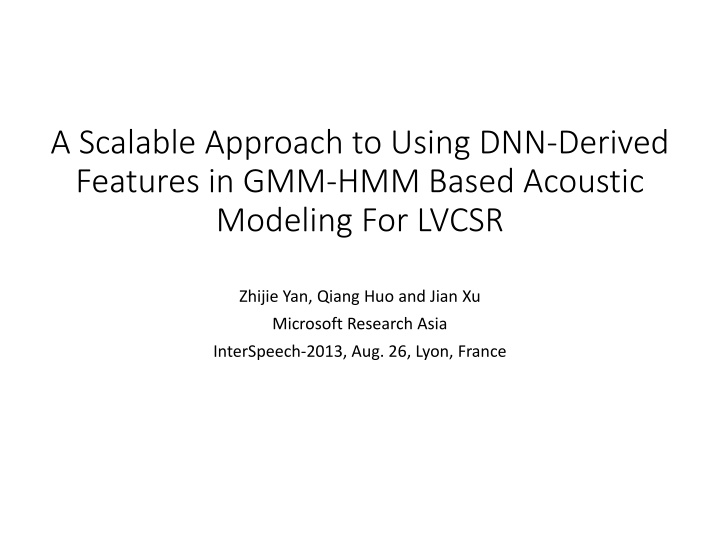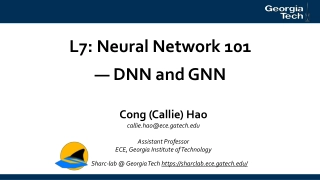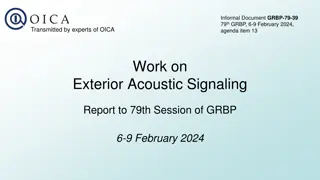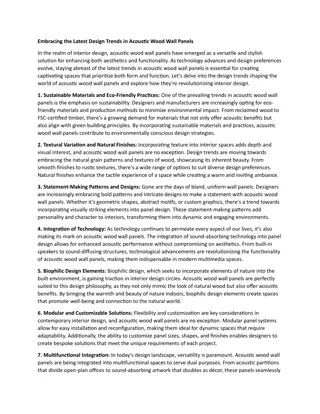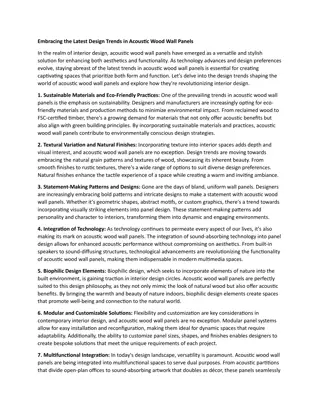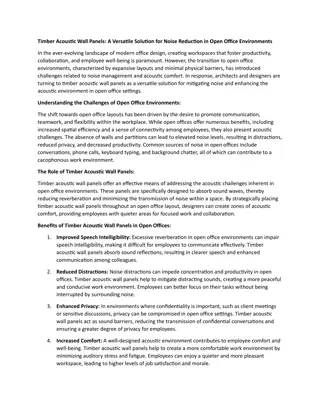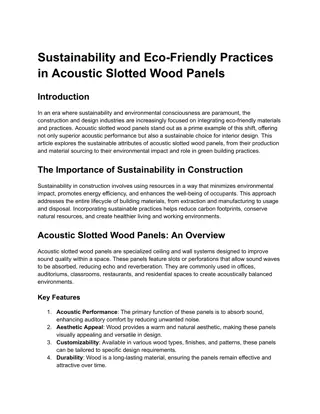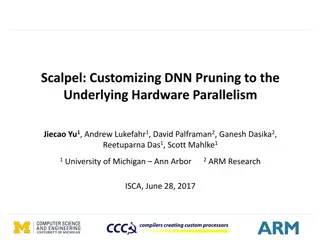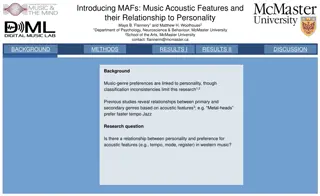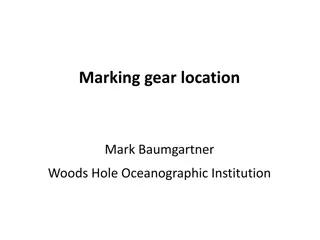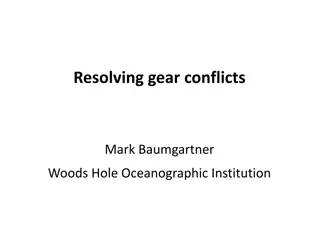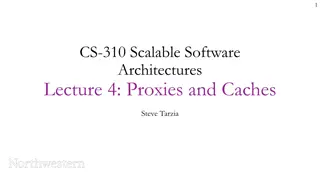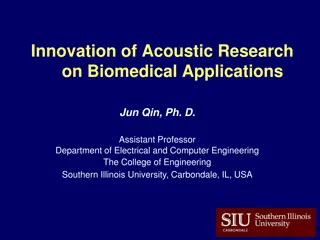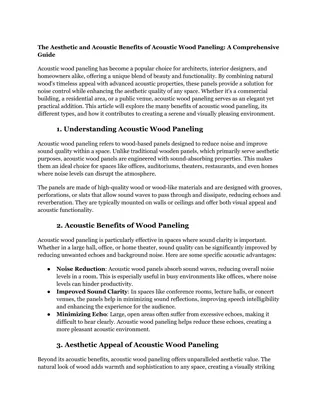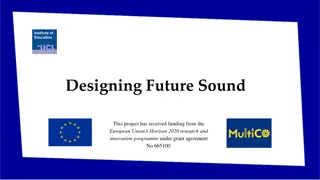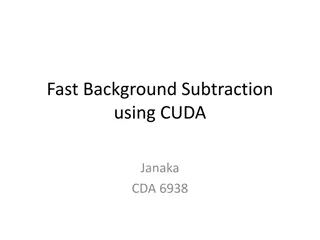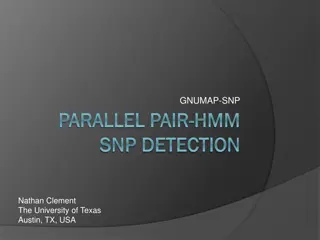A Scalable Approach to Using DNN-Derived Features in GMM-HMM Based Acoustic Modeling For LVCSR
Deep learning, particularly DNN-HMM, has shown significant performance improvements in speech recognition, leading to questions about the relevance of GMM-HMM. Factors contributing to DNN-HMM success include long-span input features and discriminative training of tied states. This parallel study delves into the implications for LVCSR and IVN transform learning within the GMM-HMM framework. Notably, DNN-HMM outperforms GMM-HMM, achieving lower WER with CE training.
Download Presentation

Please find below an Image/Link to download the presentation.
The content on the website is provided AS IS for your information and personal use only. It may not be sold, licensed, or shared on other websites without obtaining consent from the author.If you encounter any issues during the download, it is possible that the publisher has removed the file from their server.
You are allowed to download the files provided on this website for personal or commercial use, subject to the condition that they are used lawfully. All files are the property of their respective owners.
The content on the website is provided AS IS for your information and personal use only. It may not be sold, licensed, or shared on other websites without obtaining consent from the author.
E N D
Presentation Transcript
A Scalable Approach to Using DNN-Derived Features in GMM-HMM Based Acoustic Modeling For LVCSR Zhijie Yan, Qiang Huo and Jian Xu Microsoft Research Asia InterSpeech-2013, Aug. 26, Lyon, France
Research Background Deep learning (especially DNN-HMM) has become new state-of-the-art in speech recognition Good performance improvement (10% - 30% relative WER Reduction) Service deployment by many companies Research problems What are the main contributing factors to DNN-HMM? What are the implications to GMM-HMM? Is GMM-HMM out of date, or even dead?
Parallel Study of DNN-HMM and GMM-HMM Factors contributed to the success of DNN-HMM for LVCSR Long-span input features Discriminative training of tied-states of HMMs Deep hierarchical nonlinear feature mapping
Parallel Study of DNN-HMM and GMM-HMM Factors contributed to the success of DNN-HMM for LVCSR Long-span input features Discriminative training of tied-states of HMMs Deep hierarchical nonlinear feature mapping The first two can also be applied to IVN transform learning in GMM-HMM framework Z.-J. Yan, Q. Huo, J. Xu, and Y. Zhang, Tied-state based discriminative training of context-expanded region-dependent feature transforms for LVCSR, Proc. ICASSP-2013
Parallel Study of DNN-HMM and GMM-HMM Factors contributed to the success of DNN-HMM for LVCSR Long-span input features Discriminative training of tied-states of HMMs Deep hierarchical nonlinear feature mapping The first two can also be applied to IVN transform learning in GMM-HMM framework Z.-J. Yan, Q. Huo, J. Xu, and Y. Zhang, Tied-state based discriminative training of context-expanded region-dependent feature transforms for LVCSR, Proc. ICASSP-2013 Best GMM-HMM achieves 19.7% WER using spectral features DNN-HMM can easily achieve 16.4% WER with CE training
Parallel Study of DNN-HMM and GMM-HMM Factors contributed to the success of DNN-HMM for LVCSR Long-span input features Discriminative training of tied-states of HMMs Deep hierarchical nonlinear feature mapping The first two can also be applied to IVN transform learning in GMM-HMM framework Z.-J. Yan, Q. Huo, J. Xu, and Y. Zhang, Tied-state based discriminative training of context-expanded region-dependent feature transforms for LVCSR, Proc. ICASSP-2013 Best GMM-HMM achieves 19.7% WER using spectral features DNN-HMM can easily achieve 16.4% WER with CE training
Combining the Best of Both Worlds DNN-GMM-HMM DNN as hierarchical nonlinear feature extractor GMM-HMM as acoustic model
Why DNN-GMM-HMM Leverage the power of deep learning Train DNN feature extractor by using a subset of training data Mitigate the scalability issue of DNN training Leverage GMM-HMM technologies Train GMM-HMMs on the full-set of training data Well-established training algorithms, e.g., ML / tied-state based feature- space DT / sequence-based model-space DT Scalable training tools leveraging big data Practical unsupervised adaptation / personalization methods, e.g., CMLLR
Prior Art: TANDEM Features (Deep) TANDEM features H. Hermansky, D. P. W. Ellis, and S. Sharma, Tandem connectionist feature extraction for conventional HMM systems, Proc. ICASSP-2000 Z. Tuske, M. Sundermeyer, R. Schluter, and H. Ney, Context-dependent MLPs for LVCSR: Tandem, hybrid or both? Proc. InterSpeech-2012 Input layer Output layer Hidden layers
Prior Art: Bottleneck Features (Deep) bottleneck features F. Grezl, M. Karafiat, S. Kontar, and J. Cernocky, Probabilistic and bottle-neck features for LVCSR of meetings, Proc. ICASSP-2007 D. Yu and M. L. Seltzer, Improved bottleneck features using pretrained deep neural networks, Proc. InterSpeech-2011 Input layer Output layer Hidden layers
Proposed: DNN-Derived Features DNN-derived features All hidden layers feature extractor Softmax output layer log-linear model Input layer Output layer Hidden layers
DNN-Derived Features Advantages Keep as much discriminative information as possible (different from bottleneck features) Shared DNN topology with full-size DNN-HMM (different from TANDEM features) More could be done Language-independent DNN feature extractor Combined with GMM-HMM modeling + Discriminative training (e.g., RDLT+MMI, as shown latter) + Adaptation / personalization + Adaptive training
Combined With Best GMM-HMM Techniques GMM-HMM modeling of DNN-derived features DNN- derived features MMI sequence training CMLLR unsupervised adaptation Tied-state WE-RDLT PCA HLDA
Experimental Setup Training data 309hr Switchboard-1 conversational telephone speech 2,000hr Switchboard+Fisher conversational telephone speech Training combinations 309hr DNN + 309hr GMM-HMM 309hr DNN + 2,000hr GMM-HMM 2,000hr DNN + 2,000hr GMM-HMM Testing data NIST 2000 Hub5 testing set
Experimental Results 309hr DNN + 309hr GMM-HMM RDLT tied-state based region dependent linear transform (refer to our ICASSP-2013 paper) MMI lattice based sequence training UA CMLLR unsupervised adaptation
Experimental Results 309hr DNN + 309hr GMM-HMM Deep hierarchical nonlinear feature mapping is the key
Experimental Results 309hr DNN + 309hr GMM-HMM DNN-derived features vs. bottleneck features
Experimental Results 309hr DNN + 2,000hr GMM-HMM
Experimental Results 309hr DNN + 2,000hr GMM-HMM 2,000hr DNN + 2,000hr GMM-HMM
Experimental Results 309hr DNN + 2,000hr GMM-HMM 2,000hr DNN + 2,000hr GMM-HMM 0.5% absolute (or 3.6% relative gain), at cost of significantly increased training time of DNN
Conclusion Use a new way of deriving features from DNN DNN-derived features from last hidden layer Combine with best techniques in GMM-HMM Tied-state based RDLT training Sequence based MMI training CMLLR unsupervised adaptation Achieve promising results with DNN-GMM-HMM Scalable training + practical unsupervised adaptation Similar results using CNN have been reported by IBM researchers (refer to their ICASSP-2013 paper)
Thanks! Q&A
